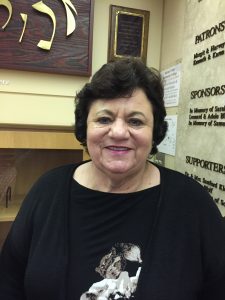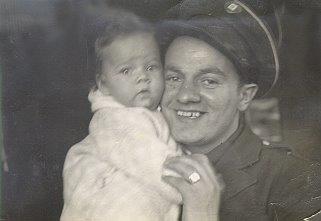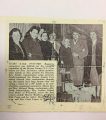- Voices of Descendants
- PEPPY MARGOLIS
- Voices of Descendants
- PEPPY MARGOLIS
Descendant Profile

PEPPY
MARGOLIS
(SECOND GENERATION)
DESCENDANT:
PEPPY SCHWARZBERG MARGOLIS
PEPPY SCHWARZBERG MARGOLIS
RELATED SURVIVOR(S):
-
DESCENDANT brief BIOGRAPHY BY PEPPY MARGOLIS
I enjoy working with people from all backgrounds, cultures, ages and nationalities. My parents are survivors of the Holocaust and our family did suffer persecution by the Nazis. Therefore, as a Child of Survivors, I understand the importance of respecting and honoring the human rights of every person, so there will be a more peaceful world for future generations which is my legacy.
As Director of Community Programs for Raritan Valley Community College, I have designed the educational programs for The Institute for Holocaust and Genocide Studies for the past 14 years. The Institute hosts about 3,000 students and educators yearly who attend the annual Learning Through Experience Program. The various speakers and workshops address the consequences of prejudice, hate, intolerance, and violence that lead to The Holocaust and Genocides of today. Topics include the roles that people play in society: rescuer, victim, bystander collaborator, and perpetrator. We ask the participants: When confronted with a situation today, what would you do?
I have more than 25 years of experience in Holocaust and Genocide studies as well as cultural diversity and interfaith relations. I earned a Masters of the Arts (1999) at Seton Hall University with a concentration in Jewish-Christian Studies and Holocaust Studies.
As the Assistant to the New Jersey State Holocaust Commission, I lectured and spoke to numerous students as well as teachers throughout the Private and Public schools, and the Universities of New Jersey. In 1990, I was the primary author of the first Curriculum on prejudice reduction, cultural diversity, Holocaust and genocide: Caring Makes A Difference K-8,which is mandated in the schools of New Jersey. As the teacher-trainer of this curriculum, I presented workshops, seminars and lectures to private and public school districts.
As the Assistant to the Director of the New Jersey State Holocaust Commission, I have worked with many agencies and organizations. I established a relationship and network with government officials, diplomats, as well as leaders in the Community. I organized and conducted the oral history interviews for survivors and their families in the Metro West and RVCC communities.
I had the opportunity to travel extensively both nationally and internationally, particularly when I was invited to attend or present papers at numerous conferences. Not only did I represent the New Jersey Commission on Holocaust and Genocide Education, but I also spoke as Second Generation having been born in a Displaced Person’s Camp near Frankfurt, Germany.
I produced three films that deal with issues about how the Holocaust has affected families and future generations: The Second Generation-Ripples From The Holocaust, 2012, and THE OTHER, in 2014 and Margit- Not A23029 in 2016.
As a contributor to a 9/11 Curriculum: Learning From the Challenges of Our Times: Global Security, Terrorism and 9/11 in the Classroom, I believe that lessons for K-12, will assist educators to talk and teach about this tragic event that changed our lives forever.
Editor’s Note:
Peppy (Pearl Schwarzberg) was the first baby born in the Displaced Persons Camp in Zeilsheim, Germany. She recalls with fondness the love she received from the survivors there who embraced her. (Refer to photo of her father in uniform holding her in the DP Camp in Related Media).
-
DESCENDANT SUBMISSION(s):
-
Sources and Credits:
Credits:
Biography by Peppy Margolis; SSBJCC Interview with Peppy Margolis, May 22, 2017; Digital historic and family photos donated by Peppy Margolis.






